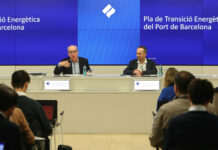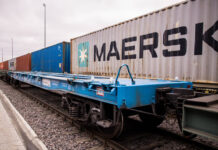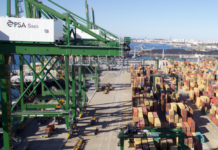
Starting this year, Yang Ming Marine Transport Corporation has begun fuelling its fleet with sustainable biofuel, a step towards its sustainable development strategy, achieving net-zero emissions by 2050, and offering low-carbon transportation services to its customers.
Furthermore, the 11,000 TEU container ship YM Together recently became the first foreign-flagged vessel to bunker biofuel in South Korea, symbolizing the company’s steady progress in sustainable development and energy transition.
In partnership with KPI OceanConnect, a marine energy supplier, YM Together, which currently serves the Trans-Pacific route PN3, bunkered B30 HSFO biofuel at Pusan Port in South Korea on 26 June.
This biofuel is a blend of used cooking oil (UCO) made from native plants and traditional high-sulfur fuel oil (HSFO). Additionally, it complies with ISO 8217 standards and meets International Sustainability & Carbon Certification (ISCC) requirements. Moreover, it aligns with the green fuel standards of the FuelEU Maritime Initiative, reducing greenhouse gas (GHG) emissions by up to 25% compared to conventional marine fuels.
Alongside using biofuel, YM Together is equipped with scrubbers and shore power systems (AMP) to further reduce GHG emissions, offering sustainable and environmentally friendly transport services. The inclusion of Pusan Port as a biofuel bunkering port in Asia increases flexibility for different routes, aiding Yang Ming in expanding biofuel usage.
Also, the company is sharing biofuel usage data with a publicly-owned local research institute in South Korea to support industry-wide energy transition and academic research.
In response to global climate change, Yang Ming is implementing various energy-saving measures to enhance the fleet’s energy efficiency.
These measures include retrofitting existing ships for better energy performance, adopting smart technology for improved onboard energy monitoring, using weather routing systems to optimize routes and reduce fuel consumption, and equipping vessels with AMP systems for shore power.
According to Yang Ming’s data, in 2023, the company’s fleet reduced carbon intensity by 61.86% compared to the baseline year of 2008, surpassing the IMO’s goal of a 40% reduction by 2030 ahead of schedule. Moving forward, Yang Ming will continue using ISCC-certified biofuel to limit its annual GHG emissions, alleviate carbon emission pressures on customers and supply chains, and advance towards the net-zero goal in maritime transport.





